I’m happy to share our new preprint on stem cell regeneration in the human colon! Using new CRISPR knockins in organoids, we show that after stem cell loss, non-stem cells rapidly regenerate them. This process is normally inhibited by the stem cells themselves. Manuscript link: tinyurl.com/3ky4ccxf
29.07.2025 10:29 — 👍 8 🔁 3 💬 1 📌 0
6/ Many thanks to all co-authors, dear collaborators and funders. Especially the Dutch Research Council (NWO) for our ‘organoids in time’ consortium spearheaded by Jeroen van Zon
23.07.2025 19:08 — 👍 1 🔁 0 💬 0 📌 0
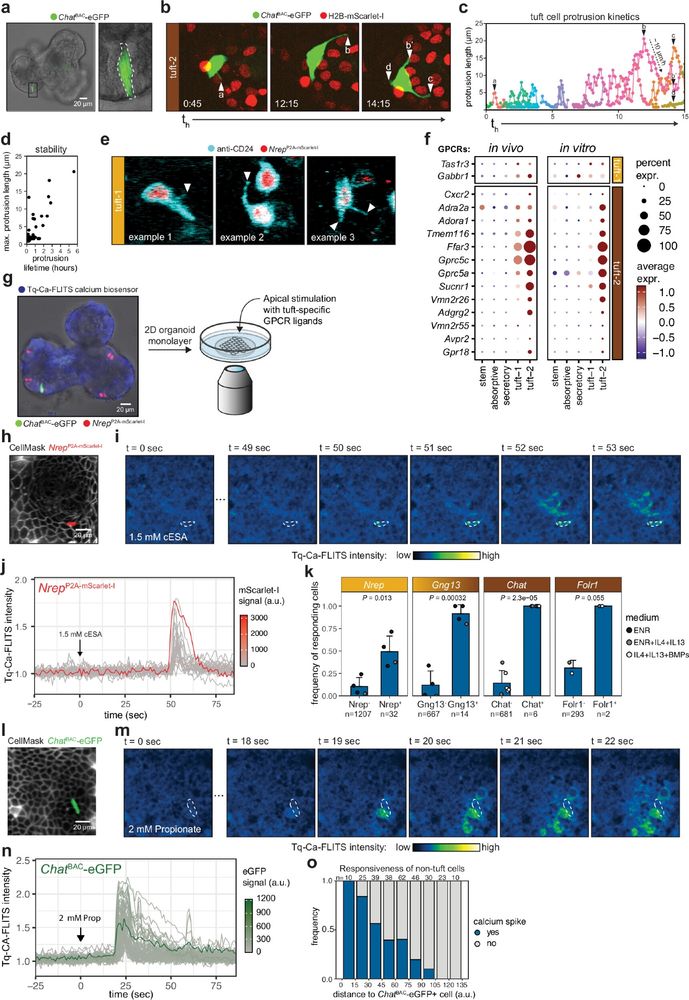
5/ Our tuft subtype-specific reporters and optimized differentiation strategy in organoids provide an experimental platform to study immune-related tuft cell subtypes and their unique cell biological properties, like signal perception, processing and transmission to trigger immune defense.
23.07.2025 19:08 — 👍 0 🔁 0 💬 1 📌 0
4/ Adaptation of the crypt-like organoid medium to better mimic the villus environment, where tuft-2 cells reside in vivo, facilitates transitioning of post-mitotic immature tuft-1 states to the mature immune-related tuft-2 states that is ready for in-depth cell biological studies.
23.07.2025 19:08 — 👍 0 🔁 0 💬 1 📌 0
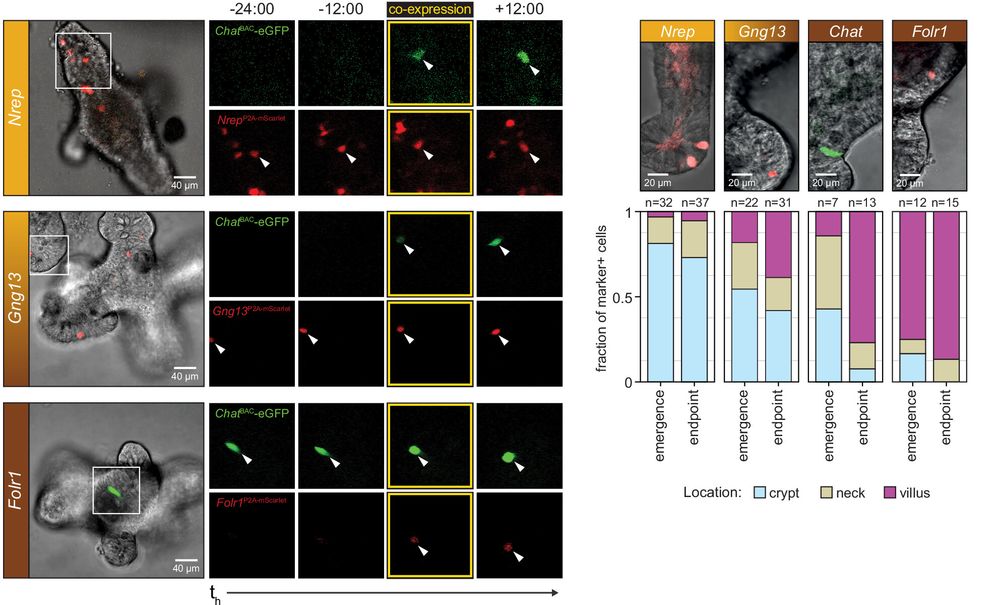
3/ Organoids with subtype-specific reporter knock-ins show that known tuft types in fact reflect successive maturation stages within the tuft lineage. Be aware 😱, commonly applied organoid treatment with IL-4 and 13 does lead to increased tuft numbers, but solely generates early tuft-1 states 🙅❌
23.07.2025 19:08 — 👍 0 🔁 0 💬 1 📌 0
2/ We analyzed single-cell intestinal tuft cell transcriptomes from mouse and human to reveal conserved proliferative tuft cell precursors (tuft-p), as well as abundant intermediaries of the previously described post-mitotic tuft-1 and tuft-2 cell states.
23.07.2025 19:08 — 👍 1 🔁 0 💬 1 📌 0
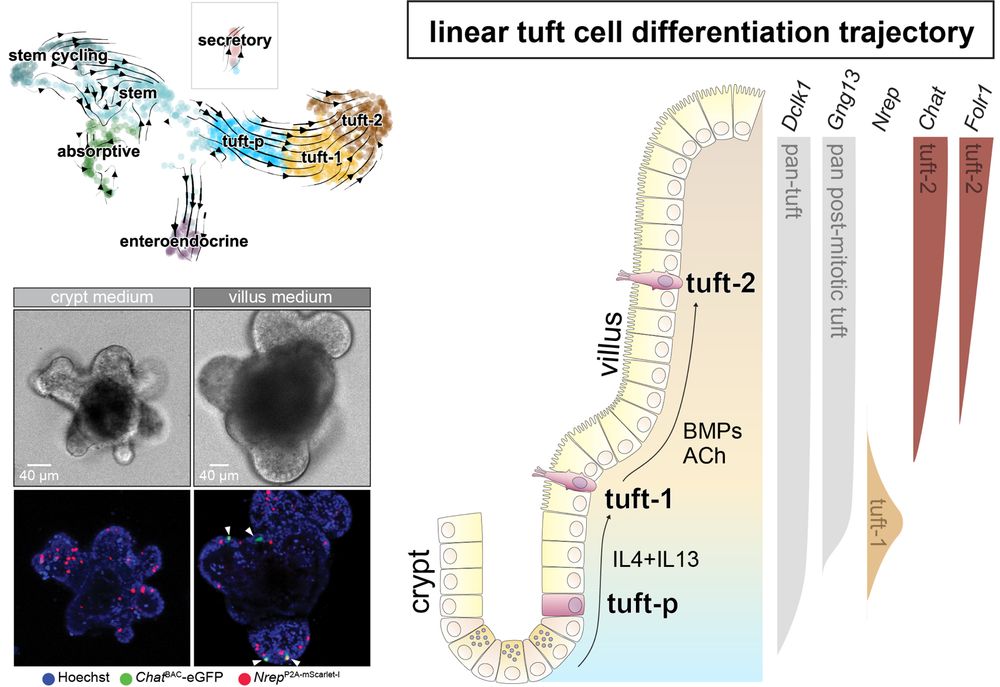
🔊 Paper alert
1/ Tuft cells are perhaps the coolest cells in our gut orchestrating host defense, but how do they manage? @julian-buissant.bsky.social provides new insights into tuft cell differentiation, and the development of accurate in vitro models for experimental cell biology 🧫🔬🧬
rdcu.be/exou9
23.07.2025 19:08 — 👍 20 🔁 3 💬 1 📌 0
Thanks for the compliments Adam
23.07.2025 08:28 — 👍 0 🔁 0 💬 0 📌 0
Big thanks to all our co-authors and in particular @jorihag.bsky.social for conceiving and spearheading this cool project 👏👏 🙌 💪
16.07.2025 19:59 — 👍 3 🔁 0 💬 0 📌 0
8/ Thus, stem cell-derived retinoic acid actively suppresses plasticity in colonocytes, ensuring homeostasis and explaining how surviving cells sense stem cell loss. Please see preprint for detailed info. Concerning our favoured knock-in strategy, please see Bollen, Hageman et al., PLOS Biol 2022
16.07.2025 19:36 — 👍 1 🔁 0 💬 0 📌 0
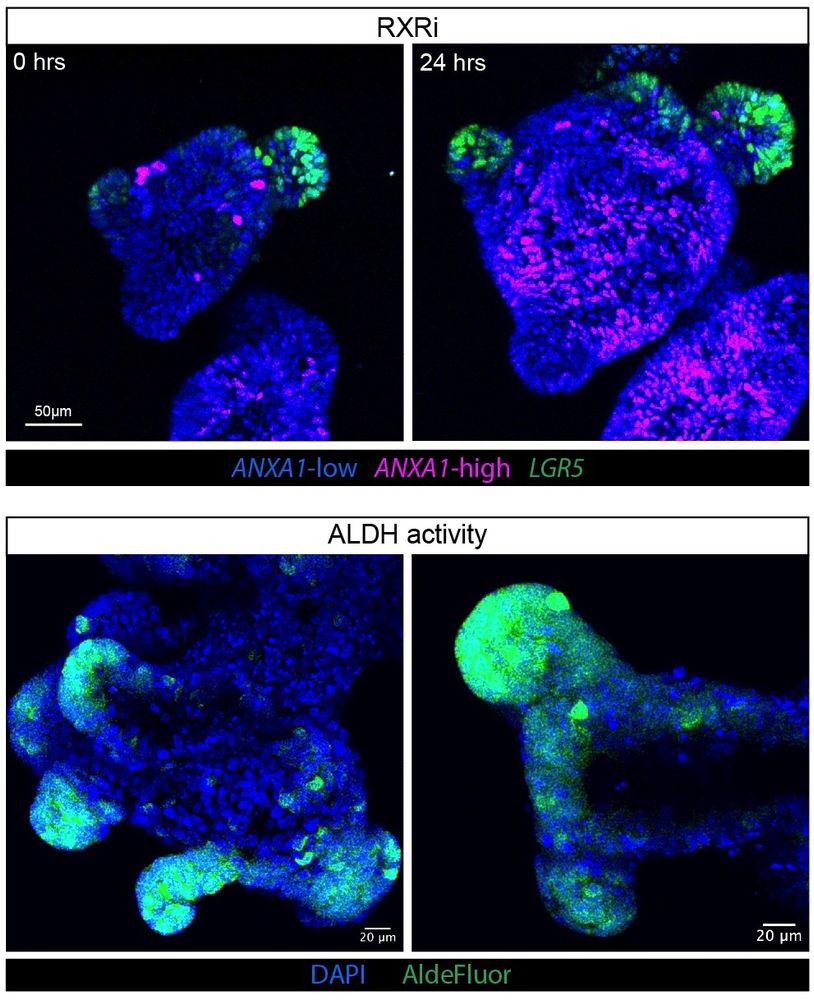
7/ Under homeostatic conditions, RXR is activated in colonocytes by RA produced by ALDH in stem cell compartments. But when the RA signal is lost (via stem cell loss or RXR inhibition), cells switch to an ANXA1-high regenerative state (visualized by independent ANXA1-RFP knock-in)
16.07.2025 19:36 — 👍 0 🔁 0 💬 1 📌 0
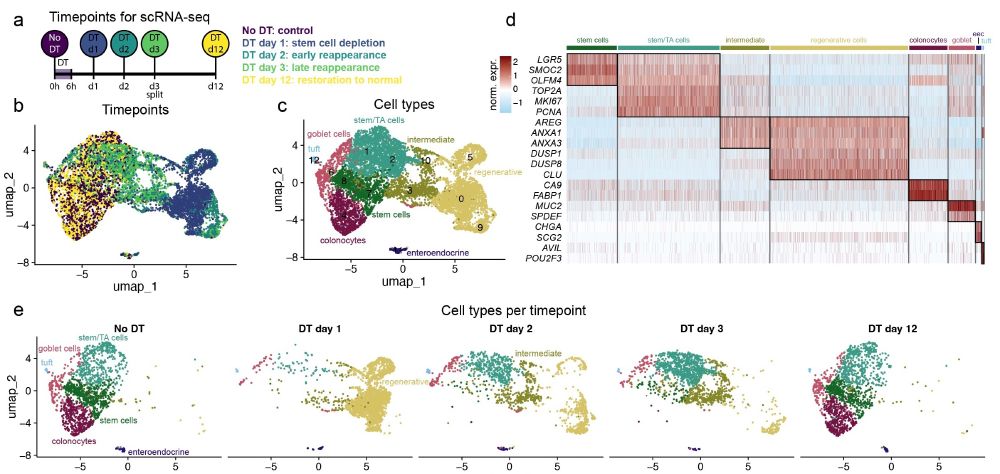
6/ scRNA-seq and sc-multiome at high temporal resolution showed that predominantly surviving colonocytes first adopt a regenerative state marked by high ANXA1, before giving rise to new stem cells.
16.07.2025 19:36 — 👍 0 🔁 0 💬 1 📌 0
5/ Stem cell depletion triggered an unbiased and fast response with surviving cells quickly regenerating the LGR5+ stem cell pool. (normal organoids carrying 2 knock-ins: LGR5-GFP-DTR x KRT20-RFP-iCasp9)
16.07.2025 19:36 — 👍 0 🔁 0 💬 1 📌 0
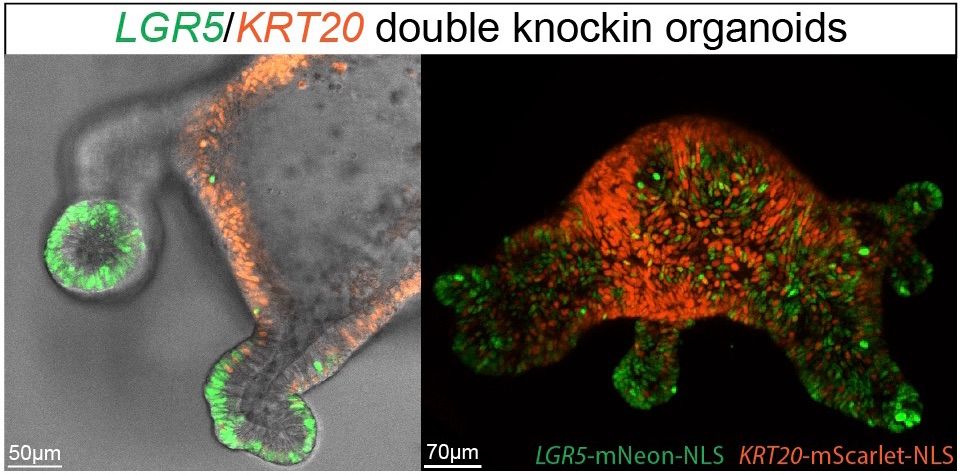
4/ Next, knock-in of the Diphtheria Toxin Receptor into the LGR5 locus enabled selective stem cell ablation under normal conditions. Killing was robust, consistent and independent of low expression levels common to typical cell type markers (unlike inducible iCasp9)
16.07.2025 19:36 — 👍 1 🔁 0 💬 1 📌 0
3/ First, we harnessed the power of genetic mouse models with selective cell type ablation. Except 😥, the widely used Diphtheria Toxin Receptor for cell killing is a common human receptor. 💡 We de-sensitised human organoids for D with a murinizing 🐭 point mutation in the endogenous entry factor.
16.07.2025 19:36 — 👍 2 🔁 0 💬 1 📌 0
2/ We found that human colon stem cells produce retinoic acid (RA), which acts as a “keep calm and carry on” signal to neighbouring cells, actively blocking their entry into a regenerative state. It explains how surviving cells sense stem cell loss 🔥
16.07.2025 19:36 — 👍 2 🔁 0 💬 1 📌 0
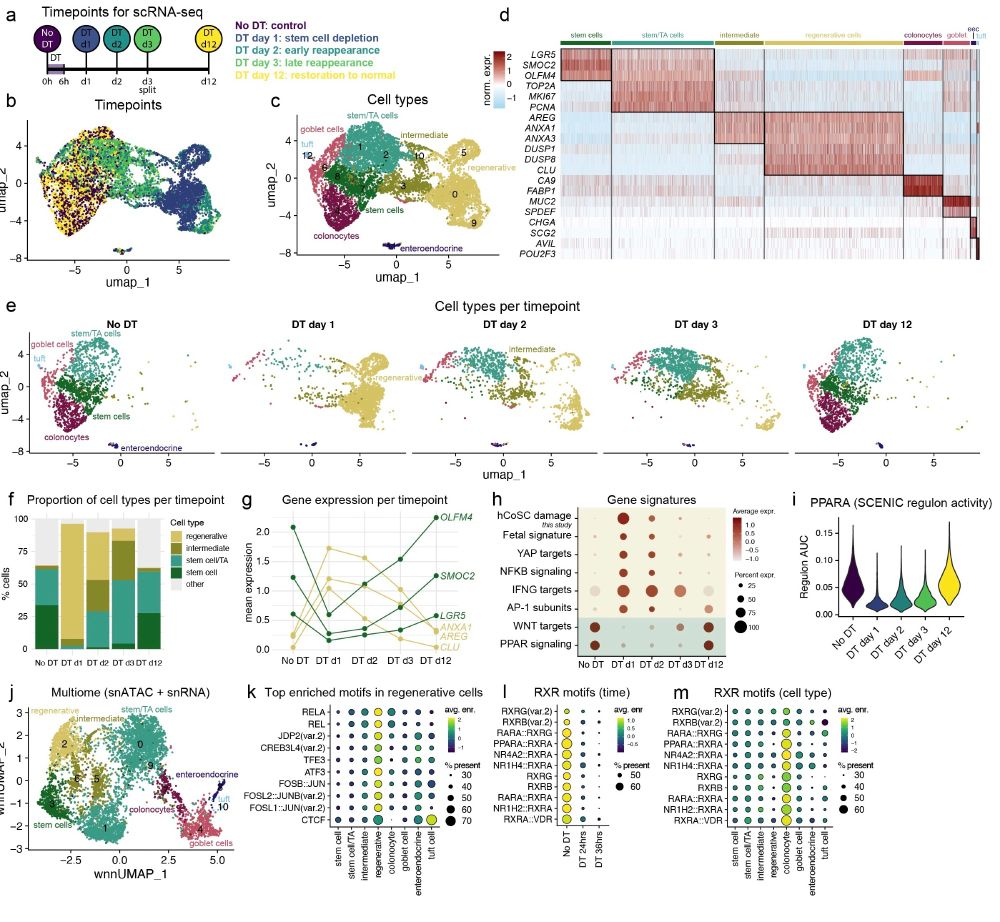
📢 New preprint 🔥
1/ Stem cell regeneration is often viewed as an actively induced process, triggered by damage. But what if plasticity is actively suppressed by the stem cells themselves? We explored plasticity with 'new' cell type ablation tech in normal human colon organoids
tinyurl.com/3ky4ccxf
16.07.2025 19:36 — 👍 38 🔁 8 💬 3 📌 4
Our #Cancer #Evolution summer school runs again 30 June-3 July at the beautiful Genome Campus in Hinxton, UK sponsored by @wellcometrust.bsky.social
Ideal for starters in the field; this year's focus is on using genomic data for cancer evo research.
Brilliant & inspiring faculty! bit.ly/40nLdDD
07.03.2025 13:58 — 👍 26 🔁 17 💬 0 📌 1
OrganoidNL Symposium - AMOLF
OrganoidNL Symposium 2025 Friday, April 11
📢 Organoid enthusiast: We are preparing for the 3rd edition of OrganoidNL - April 11th!
🔥 Check amazing line up of speakers 🔥
Calvin Kuo @priscaliberali.bsky.social Nicolas Rivron, Ina Sonnen @kaikretzschmar.bsky.social Mina Gouti, and others. Be fast to register in time
amolf.nl/organoidnl-s...
14.02.2025 13:50 — 👍 4 🔁 2 💬 0 📌 0
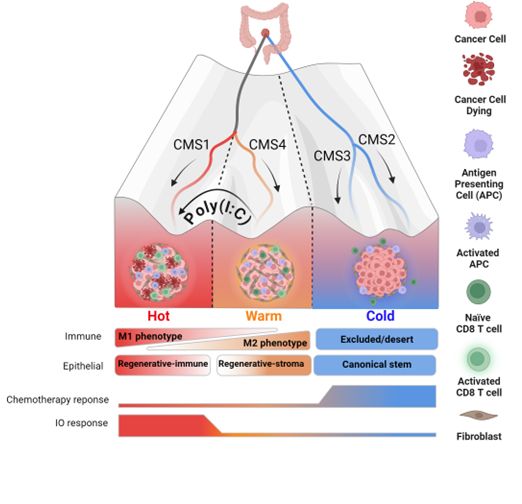
Massive congrats to Shania, Svetlana & Noha (not on Bsky) identifying the mechanistic and phenotype cascades underpinning the anti-metastatic response triggered by viral mimicry
TLDR; aggressive CMS4 tumours can be reprogrammed towards less aggressive CMS1
biorxiv.org/content/10.1...
thread 👇
06.12.2024 17:06 — 👍 14 🔁 5 💬 3 📌 0
Very happy that our tuft cell story is now on BioRxiv! If you want to know how to induce mature tuft cell phenotypes in organoids check out the preprint
03.12.2024 07:55 — 👍 9 🔁 2 💬 0 📌 0
📢📢📢
02.12.2024 06:42 — 👍 5 🔁 4 💬 0 📌 1
We thank all our co-authors to join us on our adventure and for their help!
👏👏 Big applause to our great first author @julian-buissant.bsky.social
01.12.2024 20:45 — 👍 1 🔁 0 💬 0 📌 0
Hey all, we are pretty new here
Our team likes to be creative with #organoids to solve science questions that excite us.
We mostly focus on early-stage colorectal #cancer using #patient #samples.
We'll post new work soon 🔥. First an adventurous detour 😊 on #tuft cell differentiation, stay tuned…
24.11.2024 19:20 — 👍 11 🔁 1 💬 1 📌 0
Our Lab is studying tumor growth and metastasis. We focus on gastro-intestinal cancers but are also highly interested in various types of leukaemia. We make extensive use of organoids. Homepage: https://fms.ibcs.kit.edu/orian-rousseau.php
HHMI Freeman Hrabowski Scholar and Assistant Professor in the Department of Microbiology at the University of Washington studying host-pathogen interactions in beautiful Seattle.
(he/him). Posts reflect my own opinions and do not represent my employers.
I study infection and inflammation, specifically inflammasomes + host-pathogen interaction at barrier tissues. Epithelial cells are the best. Associate Prof. @ohsummi.bsky.social Opinionated opinions mine. Immigrant. She/her
Instructor at Cincinnati Children’s Hospital | Exploring host-microbiota dynamics & tuft cell mysteries | Tennis enthusiast | Outdoor adventurer | Always chasing curiosity & the perfect backhand.
lost in the sauce
t cell immunology • scicomm • art
Harnessing the power of tissue T cell immunity - Assistant Professor @ La Jolla Institute for Immunology | San Diego | https://www.reinalab.org
Professor @UZH Immunophysiology. Interested in tissue-immune cross-talk and type 2 immunity
https://www.physiol.uzh.ch/en/research/departmentgroups/grschneider.html
Cell biologist, fascinated by (open) science, biochemistry, Extracellular Vesicles, Immunology, (fluorescence) microscopy and 3D printing. Managing Centre for Cell Imaging @ VetMed Utrecht University (www.cci.sites.uu.nl), orcid: 0000-0001-8661-7594
Biotech investor & board member | Covering biotech, drug development, venture capital, startups and pharma |📍New York
https://www.linkedin.com/in/rubensebastianperez/
Single-cell and spatial genomics, ovarian cancer, cell plasticity | Scientist, Cancer Research, Ottawa Hospital Research Institute | Assistant Professor, University of Ottawa. https://www.cooklab.ca
Associate Professor | UNC Chapel Hill, Pharmacology Department | Lineberger Comprehensive Cancer Center | Research in Endocrinology, Epigenetics, & Wnt signaling| Views my own. https://www.med.unc.edu/pharm/pruittlab/team/
Aging and cancer stem cell heterogeneity - ICREA research professor - Quantitative Stem Cell Dynamics lab
at IRB Barcelona 🇦🇷🇪🇺🇺🇸 fraticellilab.com
Post-doc at NKI-AVL - van Rheenen group - Two photon enthusiast- Vascular biologist-
Innovative Microscopy And Guidance of cells In their Native Environment
Dutch Gravitational Project between UU, UMCU, RUMC, TUD, TU/e, LUMC, PMC, NKI & Hubrecht
https://imagine-microscopy.nl/
https://www.linkedin.com/company/100344228/
Group leader @IFOMresearch interested in how cell plasticity governs health, aging, and disease. Mostly here for the news and the memes. Views are my own.
https://www.ifom.eu/en/cancer-research/research-labs/research-lab-kovatcheva.php
The European Association for Cancer Research has 14,000+ members. Our aim? Advancing cancer research 🥼🔬🌍 #KeepResearchCurious
www.eacr.org
Dutch organoid symposium bringing together scientists interested in organoids and other -oids. Third meeting April 11th at AMOLF, Amsterdam. https://amolf.nl/organoidnl-symposium
PhD student in the Brummelkamp lab at the Netherlands Cancer Institute.
Passionate about science and sarcasm. 🏳️🌈
Desperately trying to understand the cancer genome
KRAS | WNT | CRISPR | Base editing
Sometimes building guitars
www.dowlab.org










